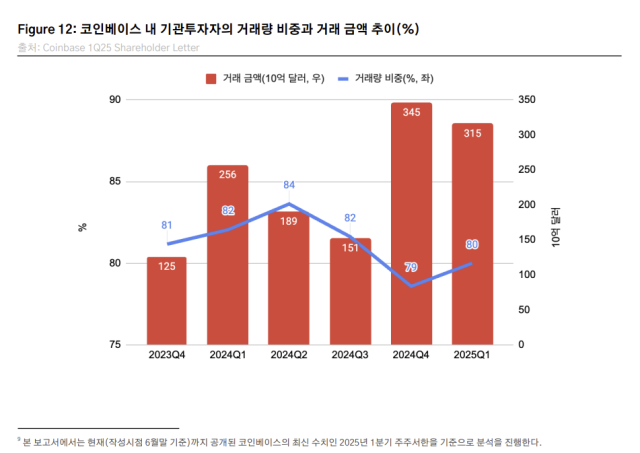
An analysis suggests that long-term institutional funds are flowing into the virtual asset market as the Genius Act, a stablecoin regulatory bill in the United States, has passed. This indicates that the institutionalization trend has begun in earnest, and institutional investment has been activated.
The Kobit Research Center released a report on the 7th titled 'Institutional Fund Trend: Stablecoin Market Reorganization Signal' and analyzed that "80% of Coinbase's total transactions occurred in institutional trading in the first quarter" and that "the institutional-led structure has become clear amid retail weakness." The report analyzed that the inflow of established institutional funds "coincides with the recent U.S.-led stablecoin institutionalization and the practical entry of the banking sector."
Related Articles
- Rising Sovereign AI and Stablecoins at the 'Economic Summit'... Deals of Tens of Billions of Dollars Possible
- "Stablecoins Should Build an Ecosystem Coexisting with Deposit Tokens and CBDCs"
- Japan Leads B2B Stablecoin Preemption
- "Stablecoins are an Innovative Means... Authorities Need a Flexible Approach"
The report focused on the 'Genius Act' passed by the U.S. Senate in June. The report evaluated that "considering that about 97% of current stablecoins are issued based on dollars, this legislation is an opportunity to reconfirm dollar hegemony in the digital environment."
JP Morgan was the first to respond to institutionalization. JP Morgan unveiled its institutional-only stablecoin 'JPMD' the day after the Genius Act passed. JPMD is issued based on Coinbase's Ethereum Layer 2 (L2) blockchain Base. It has a structure that only allows access to authorized institutions.
Choi Yun-young, head of the Kobit Research Center, said, "The emergence of the Genius Act and JPMD goes beyond simple policy and product launches, showing that the U.S. digital dollar strategy is being concretized within the traditional financial ecosystem" and "symbolizes that the boundaries between institutional finance and virtual assets are rapidly breaking down."
On the other hand, short-term institutional funds showed a flow of repeated inflows and outflows, sensitively responding to macroeconomic variables. The report presented Bitcoin wrappers and the Chicago Mercantile Exchange (CME) Bitcoin futures market as indicators of short-term fund flows. Wrappers provide indirect investment exposure through financial products based on assets without directly holding the assets. For example, Bitcoin (BTC) has products using wrapper structures such as trusts and Exchange Traded Notes (ETN).
The report analyzed that "while ETF-based spot demand supports prices, direct directional betting remains limited and is sensitively responding to macro events."
- Do Ye-ri, Reporter
< Copyright ⓒ Decenter, Unauthorized Reproduction and Redistribution Prohibited >





